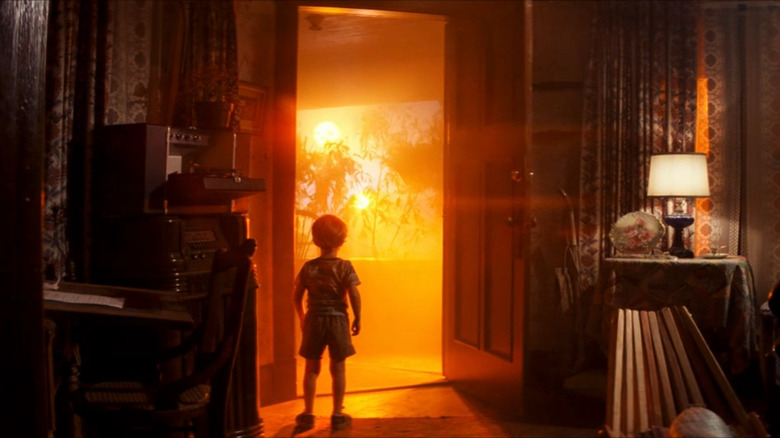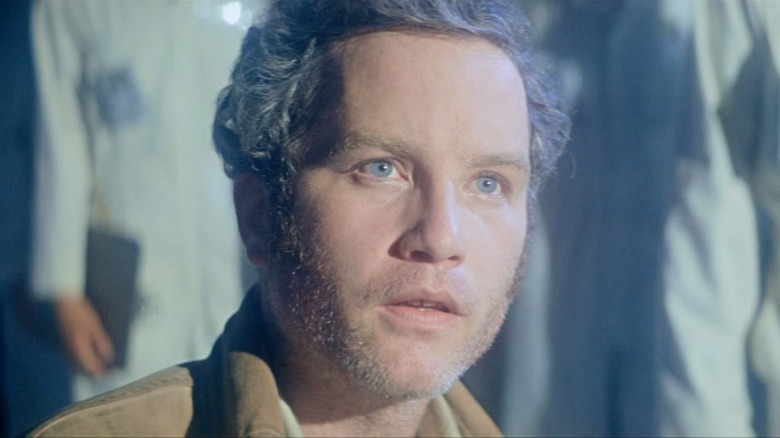Steven Spielberg Made A 'Compromise' He'd Come To Regret On Close Encounters Of The Third Kind
To think there was a time when Steven Spielberg had to compromise seems laughable. This is the most successful director in the history of the medium. His five-decade filmography is filled with timeless classics, genre-defining works, and movies that remain as powerful as the day they were released. Even this year, his most recent film "The Fabelmans" is getting a litany of rave reviews. But it was not always this way for him.
Like any filmmaker, you need a proven track record of unqualified successes for the studios to leave you alone. In 1977, Spielberg only had one: "Jaws." Yes, it was a success never before seen in the business, but it was still just one. He could make "Close Encounters of the Third Kind," but it was going to be under Columbia Pictures' terms. In a making-of documentary about the film, Spielberg recounts how the movie that ended up in theaters was rushed and not what he had hoped:
"I was trying to get Columbia to let me finish the movie the way I wanted it to be finished, but they were having big financial problems in 1977, they needed the film to come out during Christmas. And I was hoping to come out the following summer, because I couldn't make Christmas, but they kept insisting not only must you make Christmas — because our whole company is at stake, we're all counting on this film — but you have to make November. So I had no choice."
Even after "Close Encounters of the Third Kind" came out and became the third-highest grossing film of the year, Spielberg was not satisfied, and he wanted more time to make it right. Columbia agreed, but they still had their own demands for the new cut.
Either we see inside the ship or no money
Steven Spielberg's true vision for "Close Encounters of the Third Kind" meant both omitting scenes from the theatrical cut and shooting new footage, most notably the sequence where the SS Cotopaxi is discovered in the Gobi desert. Spielberg was able to make all the changes he wanted for the film's "Special Edition," but in order to get the money to do all of this, Columbia required one thing from him, which he explains in the documentary:
"I said, 'Now let me finish the film the way I'd always intended to. I want to recut certain scenes, and I want to shoot a few more sequences.' And then they said to me, 'We'll give you the money,' which is about a million and a half dollars to do that for the reissue, 'If you show the inside of the mothership. Give us something we can hang a campaign on.' And so I compromised and had Richard Dreyfuss walking inside the mothership, which I never should have done."
Seeing inside that ship defeats the entire purpose of "Close Encounters." The movie is about overwhelming obsession and how it takes over Richard Dreyfuss' character's life. The object of that obsession doesn't matter, because nothing Spielberg shows us could justify it. Only our minds can complete that picture. Unfortunately, he had to shoot it, but at least he got to make all the other changes that improve the film as well.
Luckily for us, Steven Spielberg became a titan and had the power to go back to "Close Encounters of the Third Kind" in 1998 and remove the mothership sequence. It took over 20 years, but the version of the film he wanted all along was finally available. And it's my favorite Steven Spielberg film.

